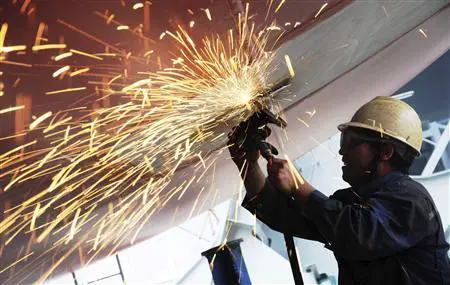Extremists have used vehicles as deadly weapons with alarming frequency in recent years, whether to promote jihad, get attention or express despair.
In response, ugly concrete blocks, as well as more aesthetic deterrents, are sprouting up in front of landmarks and ordinary public places around the world.
Here are some ways cities and governments are countering the threat:
The basic bollard – and how to improve it
Whether a post dug into a sidewalk or an unwieldy hunk of concrete, bollards are the most common anti-car shield. Impact engineers study the ideal height and shape of such barrie.
Because permanent barriers usually need to be anchored deeply to resist a vehicle’s impact, they aren’t generally installed on bridges – which were the targets of two attacks in London this year.
Engineers are tackling that challenge with new synthetic materials that can withstand major impact without needing a deep anchor, according to Margaret Gilmore, expert on intelligence at Britain’s Royal United Services Institute.
Adapting the environment for safety
Cities trying to maintain architectural harmony while increasing safety are using strategically planted trees and metal lamp posts – or adding black paint and carvings to make a state-of-the-art bollard look Victorian.
The British soccer club Arsenal’s stadium is seen as a model for incorporating “vehicle exclusion” security into its landscape: It’s surrounded by giant cannons, concrete benches and huge letters reading ARSENAL that are big enough to stop a multi-ton truck from reaching the crowds.
Train stations are expanding pedestrian zones on their perimeters, to further cushion passengers from vehicular threats.
Since last year’s truck attack in Nice, the city has launched a 35.3 million US dollars security effort aimed primarily at “keeping pedestrians and vehicles as far apart as possible,” according to municipal security chief Lauriano Azinheirinha.
That includes a four-kilometer (2.4-mile) stretch of waist-high posts connected by steel cables along the glistening shorefront Promenade des Anglais, as well as remote-controlled extendable posts and a citywide sensor system.
Upstream prevention against vehicle attacks
In Britain, guidance for armed police has been revised so that firing at a vehicle on the move is accepted for incidents such as those seen in Nice and Westminster.
All these protections don’t come cheap. Azinheirinha in Nice has urged a collective EU project to protect pedestrians in Europe’s leading cities.
Heightened intelligence efforts are also essential, said Gilmore. The focus “has got to be on stopping them ... once they’re radicalized but before they carry out an attack,” she said.
“Intelligence agencies are having successes on this front,” she said, and while they cannot prevent everything, “this sort of incident remains unusual.”
Maki Haberfeld, a professor at John Jay College of Criminal Justice, said heavily armed police officers are a better deterrent but open settings like Times Square will always be an appealing target.
“It spreads even more fear than targeting an airplane or a building that has symbolic value, because people can say, ‘I’m not going to fly, I’m not going to visit the Empire State Building,’” she said. “But people have to walk. People have to go to work.”
(AP)
 简体中文
简体中文





